#calvin 'fuzzy' samuels
Explore tagged Tumblr posts
Text
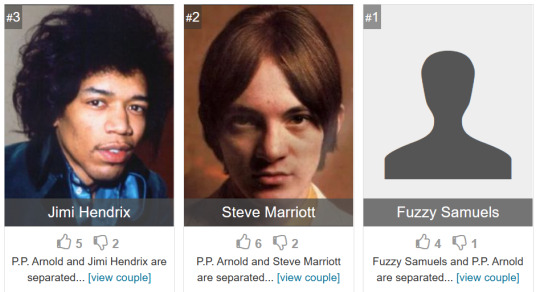
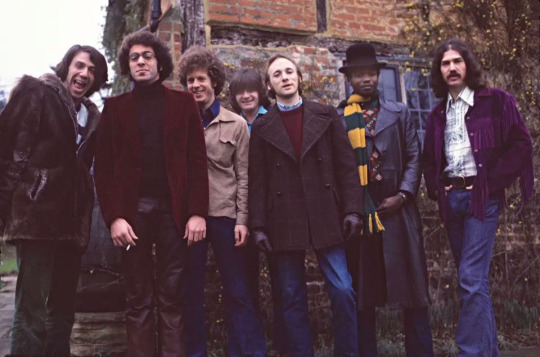
pp arnold dated stephen still's bass player, ahh small world
2 notes
·
View notes
Text
Wikipedia, America (band):
During the summer/fall of 1974, bassist Calvin "Fuzzy" Samuels (formerly of Crosby, Stills, Nash & Young and Manassas) was called to fill in for Dickey, who had come to Europe but then flown home inadvertently.
How does one fly home inadvertently? 😳
0 notes
Photo
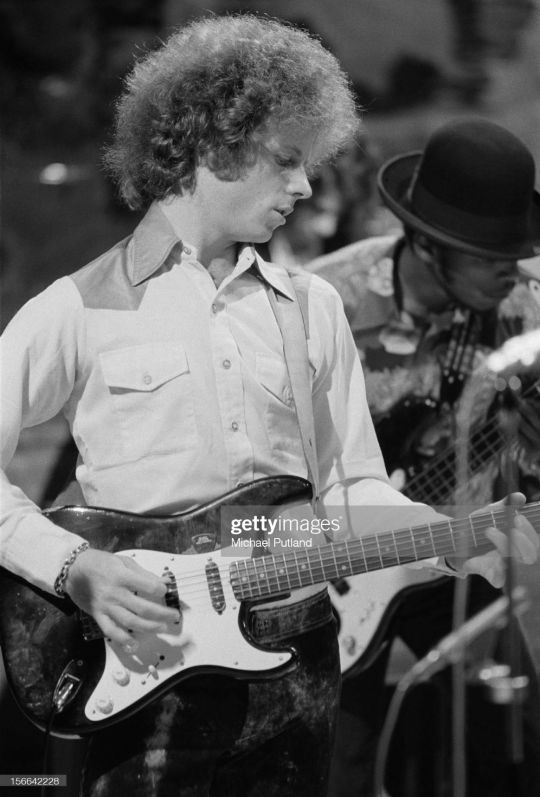
Chris Hillman and Fuzzy Samuels performing with Manassas at the BBC TV Theatre in London, 1972. Photo by Michael Putland.
#chris hillman#fuzzy samuels#calvin samuels#manassas#michael putland#the byrds#the flying burrito brothers#fuzzy samuel#calvin samuel#hooray for strategically placed watermarks#chris looked sf good during this era#faves
19 notes
·
View notes
Text
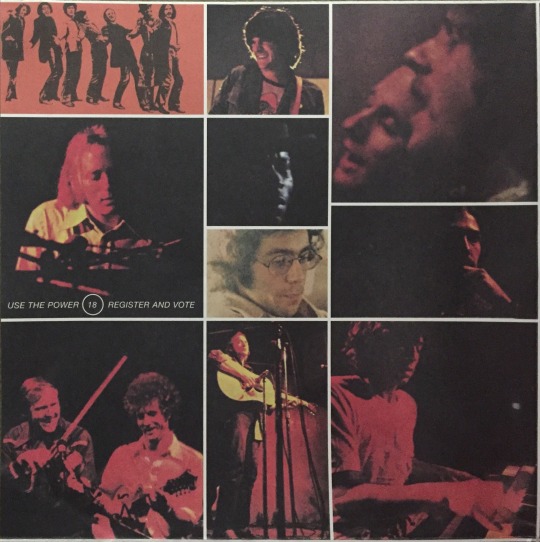
Stephen Stills and Manassas encouraging all of us to exercise the fundamental right to vote.
“Not voting is not a protest. It is a surrender.” -- Keith Ellison
Please VOTE
#stephen stills#manassas#vote#election 2020#my scan#1972#classic rock#country rock#chris hillman#dallas taylor#paul harris#al perkins#joe lala#calvin fuzzy samuels#byron berline#csny#crosby stills nash and young#the byrds#70s#my post
29 notes
·
View notes
Photo

feeeels — fuzzy (Issue One) Available at www.draw-down.com feeeels—fuzzy tackles the concept of “fuzzy” from a myriad of critical perspectives. Contributors include Prem Krishnamurthy, Juliette Cezzar, James Goggin, Keetra Dean Dixon, Elana Schlenker, Brian Allen, Chloe Scheffe, Noel Arkoos, Bo-Won Keum, Death by Audio, Brad Engelsman, Calvin "Fuzzy" Samuel, Jack Halten Fahenstock, Shan James, Ji Kim, Ian Keliher, Adnelly Marichal, Travis Morehead, Jonathan Morgan, Deniz Onder, Amanda Pickens, Andrew Scheinman, Alec Stewart, Kelly Walters, and Andrew Zinicola #graphicdesign #design #feeeels #fuzzy #magazinedesign (at Providence, Rhode Island) https://www.instagram.com/p/CADE6dJH3JI/?igshid=9m1ws2qfokmb
3 notes
·
View notes
Video
youtube
Manassas - Full Concert - 10/07/73 - Winterland
Setlist: 0:00:00 - Songs of Love 0:03:21 - Rock 'n' Roll Crazies / Cuban Bluegrass 0:07:03 - Jet Set (Sigh) 0:11:58 - Anyway 0:15:22 - So You Want To Be A Rock 'N' Roll Star 0:18:18 - Johnny's Garden 0:23:03 - Go Back Home 0:32:36 - Six Days On The Road 0:35:25 - Safe At Home 0:38:32 - Fallen Eagle 0:40:34 - Hide It So Deep 0:43:51 - You're Still On My Mind 0:46:06 - Pensamiento 0:49:48 - 49 Bye-Byes 0:57:35 - For What It's Worth 0:59:31 - Lies 1:02:59 - Treasure 1:12:11 - Find The Cost Of Freedom
Personnel: Stephen Stills - guitar, piano, banjo, lead vocals Chris Hillman - guitar, mandolin, lead vocals Al Perkins - pedal steel, guitar Paul Harris - keyboards Calvin "Fuzzy" Samuels - bass Dallas Taylor - drums Joe Lala - percussion, vocals Guest: David Crosby - guitar, vocals Guest: Graham Nash - vocals
0 notes
Video
youtube
Chequeando la trayectoria de Calvin “Fuzzy” Samuels, al que sólo conocía como bajista de Crosby, Stills, Nash & Young, me encuentro con la sorpresa de que comenzó su carrera a mitad de los 60s en los londinenses Blue-Ace-Unit (con Junior Marvin), Joe E. Young & The Toniks (con Conrad Isidore y Colin Young) y The Sundae Times (+ Isidore y Wendell Richardson) con los que sacó un curioso LP en 1969, “Us Coloured Kids”, producido por Eddy Grant de los Equals.
Marvin pasó a los Wailers de Marley, Young a Foundations, Richardson creó Osibisa y Samuels tocó con Dr. John, Marianne Faithfull, Steve Winwood, Kevin Ayers y Taj Mahal entre otros.
0 notes
Photo

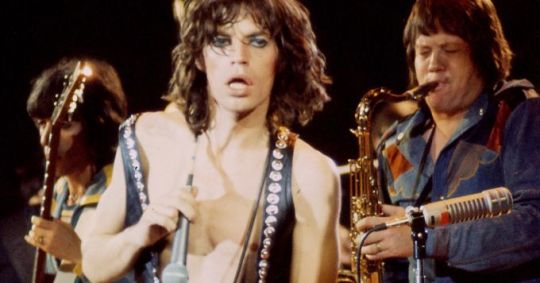
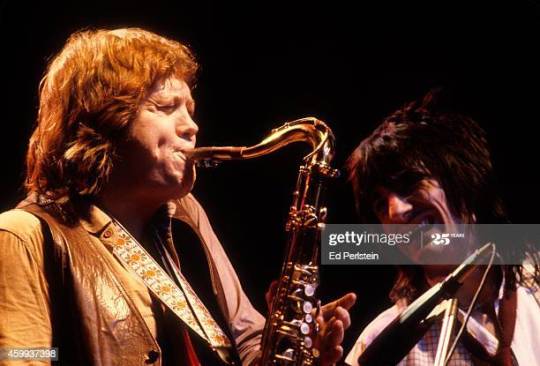
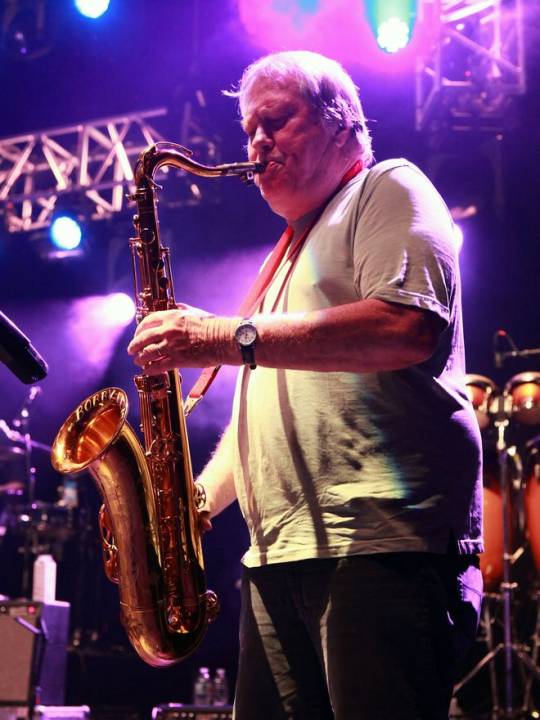
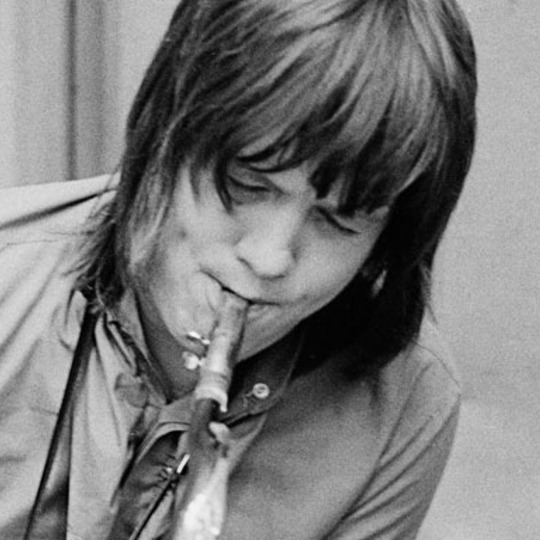

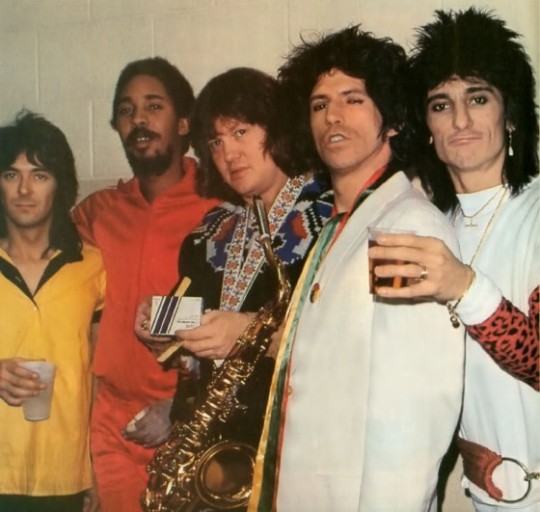
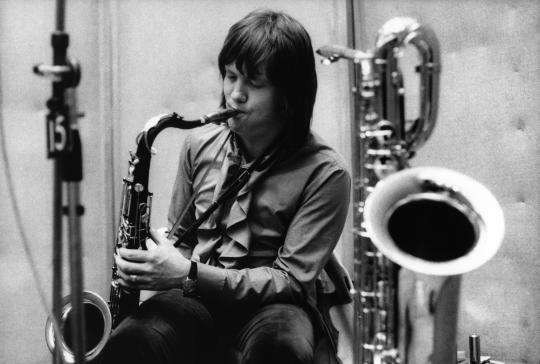
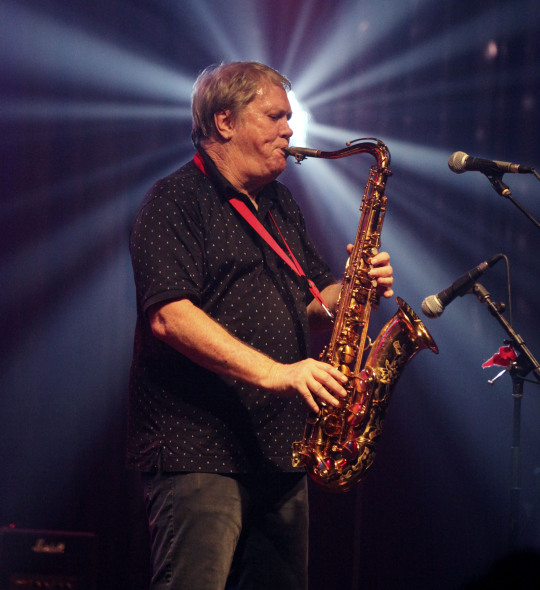
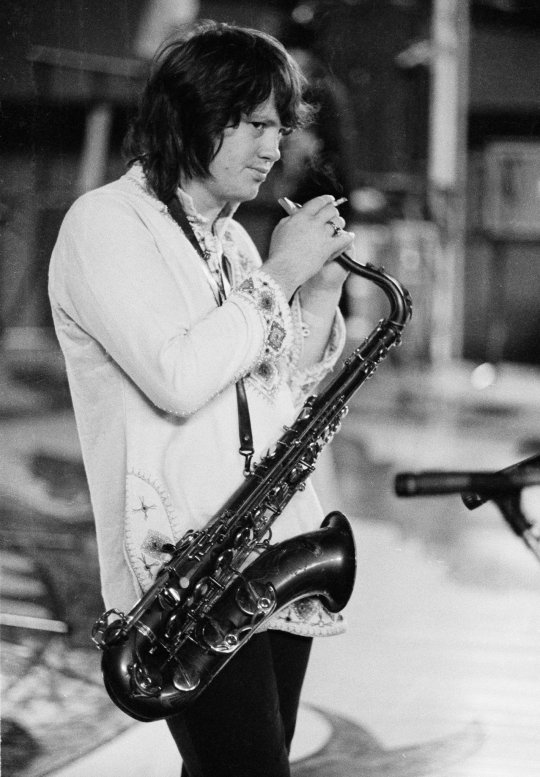
Today we remember the passing of Bobby Keys who Died: December 2, 2014 in Franklin, Tennessee
Robert Henry Keys (December 18, 1943 – December 2, 2014) was an American saxophonist who performed with other musicians as a member of several horn sections of the 1970s. He appears on albums by the Rolling Stones, Lynyrd Skynyrd, Harry Nilsson, Delaney & Bonnie and Friends, George Harrison, John Lennon, Eric Clapton, Joe Cocker and other prominent musicians. Keys played on hundreds of recordings and was a touring musician from 1956 until his death in 2014.
Bobby Keys was born at Lubbock Army Airfield near Slaton, Texas, where his father, Bill Keys, was in the U.S. Army Air Corps. His mother, Lucy Keys, was 16 when she gave birth to Robert Henry (Bobby), her first child. By 1946, Bill Keys got a job for the Santa Fe Railroad in Belen, New Mexico. The family moved to Belen, but young Robert stayed with his grandparents in Slaton, Texas, an arrangement he was quite happy with. Bill and Lucy would have three more children, Gary and twins Debbie and Daryl. Lucy Keys Brubaker went on to become a state senator in New Mexico.
Keys started touring at age fifteen with Buddy Holly and fellow Texan Buddy Knox.Keys met the Rolling Stones at the San Antonio Teen Fair while sharing a bill with the group as a member of Bobby Vee's band in 1964. He is best known for his impressive resume as a musician (most notably the saxophone solo on the 1971 Rolling Stones hit "Brown Sugar") and his friendship with Keith Richards. Keys and Richards share the same date of birth. Notably, Keys and Richards threw a television set from the 10th floor of the Continental Hyatt House in West Hollywood, California during the group's 1972 American tour, as seen in the Stones' unreleased 1972 concert movie Cocksucker Blues. After renewing his acquaintance with the band via Gram Parsons, a mutual friend, Keys made his debut with The Rolling Stones on the Let It Bleed track "Live with Me" in 1969. In addition to "Brown Sugar," he was prominently featured on such early 1970s Stones songs as "Can't You Hear Me Knocking," "Rip This Joint" and "Sweet Virginia."
Keys and Mick Jagger also became close in the early 1970s, with Keys serving as best man at Jagger's wedding. Together with Jim Price on trumpet, Keys toured with the Stones from 1970 to 1973. Along with trumpeter Steve Madaio and fellow saxophonist Trevor Lawrence, Keys continued as a touring member for the first half of the 1973 European tour before leaving in Frankfurt, Germany on September 30. According to legend, Keys was abruptly dismissed by an incensed Jagger after filling a bathtub with Dom Perignon champagne (resulting in a debt to the band that significantly exceeded his entire salary for the tour) and drinking most of it. Although Keys did not dispute the veracity of the incident, he subsequently maintained in his memoir that he left the tour of his own volition to curtail his heroin addiction for the sake of his family. As a result of his strained relationship with Jagger, Keys only guested on some shows of the 1975 and 1978 American tours, missing the 1976 European tour completely.
Richards recalled Keys overcoming Jagger's objections to returning to the band: Years later, the Stones were rehearsing for another tour. This was 1980-something, and I bought Bobby a ticket and said, “Just get your ass here. When we rehearse ‘Brown Sugar,’ just sneak up and do the solo, man.” Once we did “Brown Sugar,” Bobby hit the solo and then I looked at Mick like, “You see what I mean, Mick?” And Mick looked at me and says, “Yeah, you can’t argue with that.” Once he just played those few notes, there really was no question. So Mick relented and said, “Okay, let’s get Bob back in the band.”
Keys performed only four tracks on the 1981 tour, on which Ernie Watts was the saxophonist. Keys was reinstated as the band's main touring saxophonist on the 1982 European Tour, together with Gene Barge. Keys played with the Stones on all subsequent tours up to his death.
Prior to touring with the Stones, Keys played with Delaney & Bonnie and Friends with Eric Clapton and George Harrison in 1969. In particular, during the year 1970 he gave an extraordinary series of notable performances. Keys started the year working on Clapton's first solo LP. With Leon Russell, he supported Joe Cocker on the 48-city Mad Dogs & Englishmen tour; the live album Mad Dogs & Englishmen was released later in the year, followed by a concert movie in 1971. During the tour, Cocker and the band were accompanied by a largely American entourage, including a choir, friends, wives, children, groupies and a single dog named Canina; the entire group numbered almost 40 people. After work on George Harrison's All Things Must Pass and more Sticky Fingers tracks, he joined the Rolling Stones for their fall 1970 European tour.
From 1973 to 1975, Keys participated in Lennon's "Lost Weekend" in Los Angeles along with Ringo Starr, Harry Nilsson and Keith Moon; while in Los Angeles, he played on Lennon's albums Walls and Bridges (including a notable solo on the #1 American hit "Whatever Gets You thru the Night") and Rock 'n' Roll. Although Keys' voice is heard on the last known recording session between Paul McCartney and Lennon (widely bootlegged as A Toot and a Snore in '74), he could not recall contributing to the session. He also played the solo on Leo Sayer's 1977 international soft rock hit "When I Need You" from the Endless Flight album.
In 1979, Keys was part of a Rolling Stones spin-off band called The New Barbarians (which also included Ronnie Wood & Keith Richards) that played two concerts in Canada and eighteen shows across the United States in April and May 1979.
In 1989, Keys became the musical director for Ronnie Wood's new Miami club, Woody's On the Beach. The first week the club opened Keys booked Jerry Lee Lewis, Fats Domino and the Crickets. In the early 1990s Keys was a resident of Miami and had a band with former Stones guitarist Mick Taylor, Nicky Hopkins, Ivan Neville, former Stephen Stills bassist Calvin "Fuzzy" Samuels and others called Tumbling Dice. Although better known as a session musician, Keys released two albums of his own in the 1970s: a self-titled instrumental album on Warner Bros. Records that featured Ringo Starr, George Harrison and Eric Clapton in 1972; and Gimme the Key on Ringo Starr's record label Ring O'Records in 1975.
Keys appeared on December 16, 2011, with the Athens, Georgia-based band Bloodkin in their "Exile on Lumpkin Street" show at the Georgia Theater, which re-opened in August 2011 in its remodeled and enlarged space after the building had been gutted by fire in June 2009. Besides performing some of their own music, Bloodkin performed with Keys on numerous hits from three of the biggest Stones' albums on which Keys had performed, Let It Bleed, Sticky Fingers, and Exile on Main St.
In 2013 he played with the Rolling Stones at their Glastonbury Festival debut, headlining on Saturday, June 29. Keys played on their 14 On Fire tour with Roskilde Festival in Denmark being his last ever gig for the Stones. Keys was married to Holly Keys. Bobby's children are Amber Keys, Huck Keys, Jesse Keys and his step-son Randy Kaune. Bobby Keys died from liver cancer in hospice care at his home in Franklin, Tennessee, on December 2, 2014, sixteen days before his 71st birthday.
0 notes
Text
Mix – Manassas – Bound To Fall LIVE
[youtube https://www.youtube.com/watch?v=pBAwB5CyKKU%5D
Manassas
I manassas nascono da una serie di circostanze fortuite. Nel 1972 Stephen Stills invita Chris Hillman (ex birds) a suonare con lui nel suo nuovo disco e la session va così bene che i due deciseno di dare vita ad una gruppo, complice anche lo scarso successo commerciale ottenuto da Hillman con i Flying Burrito Brothers. Il gruppo, a cui si uniscono Al Perkins (già con Hillman nei “Burritos”), Joe Lala, Dallas Taylor, Paul Harris, Calvin “Fuzzy” Samuel”, prende il nome di Manassas,da una località in cui avvenne una delle guerre d’indipendenza americane. Già dal loro 1° album, intitolato semplicemente “MANASSAS” è evidente che oltre all’affiatamento raggiunto dalla band si è di fronte ad un fenomeno musicale destinato ad influenzare parecchie altre bands che verranno successivamente. Nel successivo album, intitolato “DOWN THE ROAD” e dal tour che ne seguirà si ha un’ulteriore conferma dell’importanza della band che dal vivo offre tra l’altro perfomance stellari.
I manassas possono tranquillamente collocarsi fra i capiscuola di quel genere musicale tipico della West – Coast americana, per il fatto che vengono introdotte alcune innovazioni nel modo di proporre quella musica come ad esempio l’utilizzo di strumenti elettrici per canzoni tipicamente country and western o l’utilizzo di ritmi latino/sud americani come in brani come “Pensamiento”. Il gruppo ha però vita breve, purtroppo, (forse per il modo dittatoriale di Stills di fare le scelte?);.
e noi ancora attendiamo notizie di una “antologia”, o qualcos’altro che ci consenta di riascoltare la magia dei favolosi Manassas dal vivo.
http://web.tiscali.it/Stephen_Stills/manassas.htm
Manassas (band)
Manassas was an American rock band formed by Stephen Stills in 1971.[2] Predominantly a vehicle for Stills’ artistic vision, the band released two albums during its active tenure, 1972’s Manassas and 1973’s Down the Road. The band dissolved in October 1973.
Manassas was formed in the fall of 1971, following Stills’ concert tour to support his album Stephen Stills 2 (1971). While Stephen Stills 2 was Stills’ second solo album, it was his first completed following the acrimonious 1970 breakup of Crosby, Stills, Nash & Young (CSNY), and was not critically well-received.[3][4] After a chance meeting with Flying Burrito Brothers singer/multi-instrumentalist Chris Hillman in Cleveland, where Stills’ tour schedule crossed paths with that of the Burritos – a band that, by late 1971, had undergone multiple personnel changes and was in financial trouble[5] – Stills saw an opportunity to change his artistic direction. He subsequently contacted Hillman, asking him, along with Burritos’ guitarist Al Perkins and fiddler Byron Berline, to join him in Miami at Criteria Studios to jam. Stills also invited several members of his touring band – drummer Dallas Taylor, bassist Calvin “Fuzzy” Samuels, keyboardist Paul Harris and vocalist/percussionist Joe Lala – to play at the session.
The musicians quickly gelled in the studio, and within several weeks had recorded enough material at Criteria to fill a double-LP album release. The band was capable of a wide musical range, with a repertoire including blues, folk, country, latin, and rock songs. Rolling Stones bassist Bill Wyman, a friend of both Hillman and Stills who visited Criteria during the sessions, was an early fan of the band, at one point expressing an interest in joining.[6] (Wyman would contribute to the sessions by helping Stills re-write his to-date unrecorded song from 1968, “Bumblebee,” as the blues/funk tune “The Love Gangster,” with Wyman also playing bass on the track.) The band christened itself Manassas after Stills, who had an interest in American Civil War history, orchestrated a photo shoot for them in Manassas, Virginia, the site of the First and Second Battles of Bull Run (1861 and 1862, respectively).
http://en.wikipedia.org/wiki/Manassas_%28band%29
from WordPress https://ift.tt/3bSa6vH via IFTTT
0 notes
Text
Mix – Manassas – Bound To Fall LIVE
[youtube https://www.youtube.com/watch?v=pBAwB5CyKKU%5D
Manassas
I manassas nascono da una serie di circostanze fortuite. Nel 1972 Stephen Stills invita Chris Hillman (ex birds) a suonare con lui nel suo nuovo disco e la session va così bene che i due deciseno di dare vita ad una gruppo, complice anche lo scarso successo commerciale ottenuto da Hillman con i Flying Burrito Brothers. Il gruppo, a cui si uniscono Al Perkins (già con Hillman nei “Burritos”), Joe Lala, Dallas Taylor, Paul Harris, Calvin “Fuzzy” Samuel”, prende il nome di Manassas,da una località in cui avvenne una delle guerre d’indipendenza americane. Già dal loro 1° album, intitolato semplicemente “MANASSAS” è evidente che oltre all’affiatamento raggiunto dalla band si è di fronte ad un fenomeno musicale destinato ad influenzare parecchie altre bands che verranno successivamente. Nel successivo album, intitolato “DOWN THE ROAD” e dal tour che ne seguirà si ha un’ulteriore conferma dell’importanza della band che dal vivo offre tra l’altro perfomance stellari.
I manassas possono tranquillamente collocarsi fra i capiscuola di quel genere musicale tipico della West – Coast americana, per il fatto che vengono introdotte alcune innovazioni nel modo di proporre quella musica come ad esempio l’utilizzo di strumenti elettrici per canzoni tipicamente country and western o l’utilizzo di ritmi latino/sud americani come in brani come “Pensamiento”. Il gruppo ha però vita breve, purtroppo, (forse per il modo dittatoriale di Stills di fare le scelte?);.
e noi ancora attendiamo notizie di una “antologia”, o qualcos’altro che ci consenta di riascoltare la magia dei favolosi Manassas dal vivo.
http://web.tiscali.it/Stephen_Stills/manassas.htm
Manassas (band)
Manassas was an American rock band formed by Stephen Stills in 1971.[2] Predominantly a vehicle for Stills’ artistic vision, the band released two albums during its active tenure, 1972’s Manassas and 1973’s Down the Road. The band dissolved in October 1973.
Manassas was formed in the fall of 1971, following Stills’ concert tour to support his album Stephen Stills 2 (1971). While Stephen Stills 2 was Stills’ second solo album, it was his first completed following the acrimonious 1970 breakup of Crosby, Stills, Nash & Young (CSNY), and was not critically well-received.[3][4] After a chance meeting with Flying Burrito Brothers singer/multi-instrumentalist Chris Hillman in Cleveland, where Stills’ tour schedule crossed paths with that of the Burritos – a band that, by late 1971, had undergone multiple personnel changes and was in financial trouble[5] – Stills saw an opportunity to change his artistic direction. He subsequently contacted Hillman, asking him, along with Burritos’ guitarist Al Perkins and fiddler Byron Berline, to join him in Miami at Criteria Studios to jam. Stills also invited several members of his touring band – drummer Dallas Taylor, bassist Calvin “Fuzzy” Samuels, keyboardist Paul Harris and vocalist/percussionist Joe Lala – to play at the session.
The musicians quickly gelled in the studio, and within several weeks had recorded enough material at Criteria to fill a double-LP album release. The band was capable of a wide musical range, with a repertoire including blues, folk, country, latin, and rock songs. Rolling Stones bassist Bill Wyman, a friend of both Hillman and Stills who visited Criteria during the sessions, was an early fan of the band, at one point expressing an interest in joining.[6] (Wyman would contribute to the sessions by helping Stills re-write his to-date unrecorded song from 1968, “Bumblebee,” as the blues/funk tune “The Love Gangster,” with Wyman also playing bass on the track.) The band christened itself Manassas after Stills, who had an interest in American Civil War history, orchestrated a photo shoot for them in Manassas, Virginia, the site of the First and Second Battles of Bull Run (1861 and 1862, respectively).
http://en.wikipedia.org/wiki/Manassas_%28band%29
from WordPress https://ift.tt/2uuRcey via IFTTT
0 notes